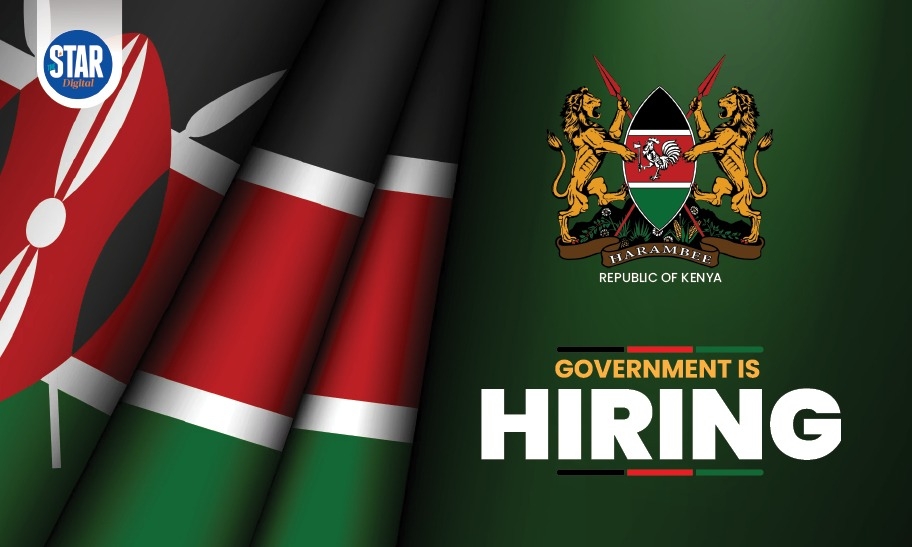Dry weather will continue in almost all parts of the country, the weatherman has said in a five-day forecast.
However, many places will be cloudy, ushering in Kenya’s annual cold season, David Gikungu, head of meteorological department, said.
“Most parts of the country are likely to be generally dry,” Gikungu said in a forecast ending Monday.
A few places will have afternoon rains.
“However, rainfall is expected over a few areas in the Highlands East and West of the Rift Valley, the Lake Victoria Basin and the Rift Valley.
“Intermittent cold and cloudy conditions are expected over some parts of the Highlands East and West of the Rift Valley, the South-eastern lowlands and the Rift Valley.”
June is usually dry and cool in most parts of Kenya, but KMD noted that this season will still be wetter than average.
“The outlook for the June-July-August 2024 rainfall season indicates likelihood of above-average rainfall for the highlands west of the Rift Valley, Lake Victoria basin region, the Rift Valley, parts of the highlands east of the Rift Valley and the northwestern region,” Gikungu said.
The coastal strip is expected to receive near to above average rainfall, while Central highlands and Nairobi areas, as well as parts of Ukambani will experience cool and cloudy conditions with occasional light to moderate rainfall until August.
“Overall, temperatures across the country are expected to be slightly warmer than average for the season,” he said.
The country is coming from the long rains season, which was considerably wetter than usual in most parts.
The heavy rains are expected to lead to a bumper harvest this year.
According to the Integrated Food Security Phase Classification report, the number of Kenyans in need of food aid has already gone down from 5.4 million to 1.2 million last year.
The IPC's projection from April to June showed an improvement in food security across most regions analysed.
In the 23 Asal counties, approximately 1.2 million people are projected to experience high levels of acute food insecurity (IPC Phase 3 or above).
This marks a 25 per cent improvement compared to the previous year, when about 5.4 million people needed food aid.
This positive change is attributed to seasonal improvements, contrasting with the preceding year’s five consecutive failed seasons and widespread droughts.
"Notably, a small population, approximately 26,000 people (0.2 per cent of the analysed population), is expected to be in IPC Phase 4 (Emergency). This group is likely to employ consumption-based or livelihood coping strategies, necessitating urgent action to address food consumption gaps and safeguard their livelihoods," the report says.
The United Nations Office for the Coordination of Humanitarian Affairs says overall, more than 48.1 million people, mainly in Ethiopia, Kenya, Somalia, South Sudan and Sudan, are projected to face acute food insecurity by July.
OCHA says in Eastern Africa, severe climate events, conflicts and disease outbreaks continue to cause displacement and push millions into acute food insecurity, high levels of malnutrition and public health emergencies.
El Niño-induced heavy rains, landslides and flooding have hit many parts of the region, leading to loss of lives, livestock and damage to infrastructure and agricultural assets.
Tropical Cyclone Hidaya and Tropical Storm Ialy contributed to adverse weather, while communities around Lake Victoria and Lake Tanganyika were on alert due to rising water levels.
The UN says malnutrition rates surged, putting children and women at higher risk.
In Kenya, the nutrition situation is expected to improve in areas such as Kajiado Urban, Kajiado Rural, Kilifi, Garissa, Isiolo, Mandera, Tana River, Wajir, Samburu, Turkana West, Turkana Central/Loima, Kitui, Makueni and Tharaka.
Similar improvements are anticipated in Baringo North and South, Baringo East Pokot, West Pokot, North Horr/Chalbi, Laisamis/Loiyangalani and Turkana North/Kibish. However, a deterioration is projected in Moyale but within the same phase.
Despite the expected improvement, acute malnutrition remains prevalent in Asals.






![[PHOTOS] Betty Bayo laid to rest in Kiambu](/_next/image?url=https%3A%2F%2Fcdn.radioafrica.digital%2Fimage%2F2025%2F11%2F3b166e2e-d964-4503-8096-6b954dee1bd0.jpg&w=3840&q=100)








